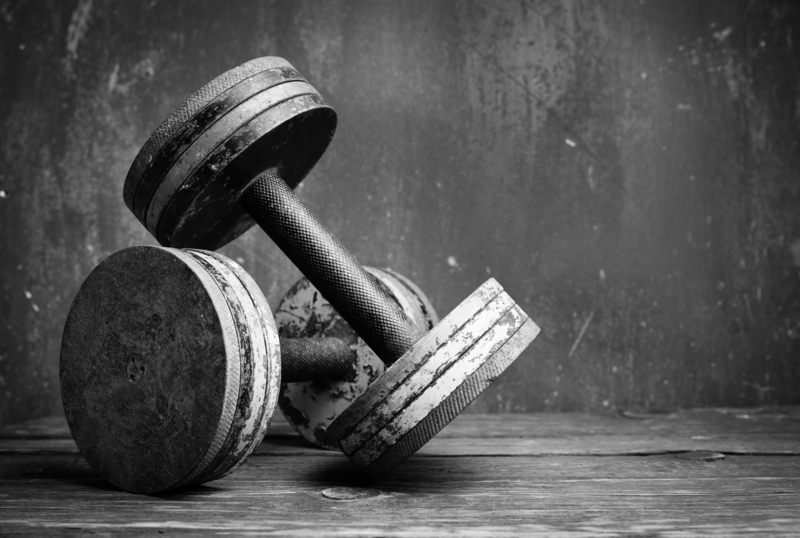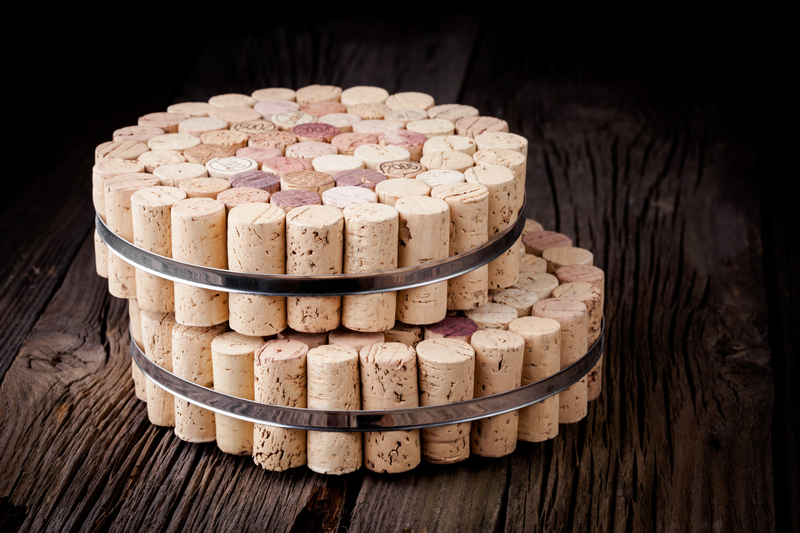Cut Down on Waste by Upcycling Unwanted Objects into Useful and Beautiful Pieces
Upcycling unwanted objects has gone from being a mere trend to a vital practice for environmental stewardship and personal creativity. As waste management concerns continue to grow, discovering creative ways to reduce waste and upcycle unwanted items into functional or decorative objects is more relevant than ever. In this comprehensive guide, you'll learn how to transform everyday junk into treasures, reduce your carbon footprint, and embrace a more sustainable lifestyle.
What is Upcycling?
Upcycling refers to the process of creatively reusing discarded materials or objects in such a way as to create a product of higher quality, value, or environmental benefit than the original. Unlike recycling, which typically involves breaking materials down (think melting plastic or pulping paper), upcycling repurposes unwanted objects with minimal processing, preserving much of the original material.
- Recycling: Breaks materials down into their raw components for remanufacturing.
- Upcycling: Enhances or transforms existing items into something new, useful, or beautiful.
Underlining the importance, upcycling reduces landfill waste, curbs pollution, and can save money while offering unique, customized home decor and utility items.

Why Upcycling is Important for the Environment
In 2024, the world faces a mounting waste problem. According to the latest data, the average person generates over 0.74 kilograms of solid waste daily. Landfills are filling up, plastics are polluting oceans, and greenhouse gases from trash decomposition are a significant contributor to climate change. Cutting down on waste by upcycling unwanted objects is a tangible way for individuals to make a positive environmental impact.
Major Environmental Benefits of Upcycling
- Reduces landfill use: By repurposing what you might otherwise throw away, you're diverting material from crowded landfill sites.
- Lower carbon footprint: Upcycling usually requires less energy compared to recycling or manufacturing new goods.
- Conserves natural resources: Upcycled materials do not need to be harvested or extracted anew from the earth.
- Decreases pollution: Less energy and fewer resources means fewer greenhouse gas emissions and less chemical pollution.
By transforming trash into treasure, you're helping fight overconsumption and inspiring others to embrace less wasteful lifestyles.
Getting Started: How to Identify Upcyclable Items
Almost anything destined for the trash or recycling bin can be upcycled. The secret is to look at objects not for what they are, but for what they could become. Here's a handy checklist to help you identify items suitable for creative reuse:
- Sturdy containers: Glass jars, tin cans, coffee tins
- Furniture: Old chairs, tables, dressers, vintage doors
- Textiles: Worn-out jeans, t-shirts, tablecloths, bed sheets
- Electronics: Defunct keyboards, motherboards, old smartphones
- Broken jewelry: Bangles, beads, pendants
- Paper goods: Books, magazines, cardboard boxes
- Miscellaneous: Wine corks, bottle caps, pallet wood
Before you toss anything out, ask yourself: Can this item be cleaned, repaired, reassembled, or decorated to serve a new purpose?
Creative Upcycling Ideas: Giving Unwanted Objects New Life
The options for upcycling unwanted objects into beautiful and useful pieces are practically limitless. Here are some innovative projects to spark your imagination and help you embark on your upcycling journey.
1. Upcycle Glass Jars and Bottles
- Storage Solutions: Mason jars or old condiment bottles make stylish pantry organizers for grains, spices, or snacks.
- Vases & Candle Holders: Add a pop of color with paint or twine for customized home decor.
- Lamp Bases: Stack bottles or jars as funky bases for table lamps.
2. Transform Wooden Pallets
- Outdoor Furniture: Convert discarded pallets into patio lounges, dining sets, or coffee tables--finish with a weather-resistant stain.
- Planters: Create herb gardens or vertical planters for small spaces or balconies.
- Wall Shelves: Minimal sanding and painting can turn pallet slats into rustic shelves.
3. Repurpose Old Clothing
- Memory Quilts: Patch together meaningful old T-shirts into a cozy quilt.
- Rag Rugs: Weave strips of fabric into colorful floor coverings.
- Reusable Tote Bags: Convert outgrown jeans or shirts into sturdy shopping bags and cut down on plastic bag use.
4. DIY Art and Decor From Electronic Waste
- Circuit Board Coasters: Clean and trim old circuit boards to use as unique coasters.
- Keyboard Key Magnets: Glue magnets to old keyboard keys for quirky fridge notes.
- Wall Art: Arrange defunct hardware (like wires and drives) into modern industrial mosaics.
5. Tired Furniture Makeovers
- Paint and Stencil: Revitalise scuffed tables and drawers with bold paint colors or intricate stencils.
- New Handles and Feet: Mix and match hardware or swap in vintage finds for a fresh look.
- Repurpose: Turn an old door into a headboard or a dresser into a bathroom vanity.
Tips for Successful Upcycling Projects
While upcycling unwanted items is fun and rewarding, a bit of planning helps ensure safety and satisfying results. Here are some expert tips:
- Clean Thoroughly: Ensure items like jars, tins, and clothes are clean and dry before beginning.
- Use Safe Tools: Always follow manufacturer instructions and use protective gear for cutting, painting, or sanding.
- Embrace Imperfection: Often, the unique character or patina of old items adds to their charm.
- Mix and Match: Don't be afraid to combine materials--like adding fabric to wood or metal to glass.
- Start Small: Try easy projects before tackling large furniture or complex decor.
Remember: Upcycling is all about creativity and sustainability--there's no single "right way" to do it!
The Financial Benefits of Upcycling Unwanted Objects
Beyond environmental rewards, upcycling to reduce waste can also offer significant financial advantages:
- Free or Low-Cost Materials: Most upcycling projects use things you already have or can acquire cheaply or for free.
- Unique Decor at Low Cost: Upcycled furniture and art are far more affordable than buying new, especially for custom or designer looks.
- Potential Profits: Many people turn upcycling into a side-hustle, selling repurposed goods at local markets or online.
Whether you're decorating on a budget, fundraising through crafting, or simply inspired to waste less, upcycling gives you resourceful power over your consumption.
How Upcycling Supports a Circular Economy
One of the most exciting reasons to cut down on waste with upcycling is its role in the circular economy. Unlike our traditional "take-make-dispose" approach, the circular economy is based on keeping resources in use for as long as possible, extracting their maximum value, and then recovering materials at the end of their service life.
- Extends product life: Upcycling reimagines unwanted items for continued use, delaying their entry into the waste stream.
- Sparks innovation: Finding new uses for old items encourages creative problem-solving and product design thinking.
- Strengthens local economies: Local upcycling businesses and crafters reduce the need for imports, bolster small-business growth, and foster community skills.
By upcycling, you're actively participating in building a more sustainable, circular world.
Kids and Families: Teaching Sustainability Through Upcycling
Upcycling unwanted items isn't just for adults--it's a fantastic educational tool for children. Families who upcycle together nurture creativity, foster resourcefulness, and build eco-consciousness. Here are some fun project ideas for all ages:
- Tin Can Drums: Decorate empty cans, add a balloon "drumhead," and let kids make music!
- Egg Carton Critters: Paint and cut old egg cartons into insects or animals.
- Book Page Art: Repurpose old, damaged books to create collages, greeting cards, or bookmarks.
- Garden Markers: Craft plant labels from painted stones or broken tiles.
Upcycling as a family yields beautiful memories--and a cleaner planet for the next generation.
Advanced Upcycling: Moving Beyond Crafts to Home Renovation
While many upcycling projects focus on crafts and decor, more ambitious makers use unwanted items in larger-scale home renovations. This can include:
- Flooring: Reclaimed wood or tiles from demolished buildings become beautiful and durable floors.
- Feature Walls: Pallet planks, old shutters, or mismatched mirrors create arresting accents.
- Kitchen Islands: Old dressers, sewing machine stands, or workbenches can be converted into stunning kitchen islands.
These projects not only cut down on landfill waste but also infuse homes with character and history you won't find in mass-manufactured materials.
Sharing and Showcasing Your Upcycled Creations
The community aspect of upcycling is vital for inspiration. Share your upcycled masterpieces on social media using hashtags like #upcycle, #trash2treasure, or #zerowastehome. You can:
- Join local upcycling workshops to learn new techniques and meets like-minded crafters.
- Sell, gift, or swap upcycled creations at fairs, markets, or neighborhood exchanges.
- Encourage friends and family to join you, building a network of sustainable makers.

Overcoming Challenges in Upcycling
Occasionally, upcycling unwanted objects into beautiful pieces comes with obstacles such as lack of inspiration, scarcity of tools, or time constraints. Here's how to stay motivated:
- Search online: Websites like Pinterest and Instagram are goldmines for upcycling project ideas.
- Join local maker groups: Community centers and libraries often host upcycling meetups.
- Visit thrift stores: Secondhand shops spark ideas and provide low-cost project materials.
- Start a "materials swap" group: Trade unused items with other upcyclers for new inspiration.
Conclusion: A Beautiful Solution for Waste Reduction
Reducing waste through upcycling isn't just environmentally responsible--it's a creative, personal, and often joyous journey. Each time you upcycle unwanted objects into useful or artistic treasures, you help conserve resources, support the circular economy, and infuse your space with unique charm. The small steps you take today can inspire a broader cultural movement toward sustainability, innovation, and beauty.
Remember: Next time you're about to throw something out, pause and ponder: What could this become?
Together, we can cut down on waste, one upcycled masterpiece at a time.
